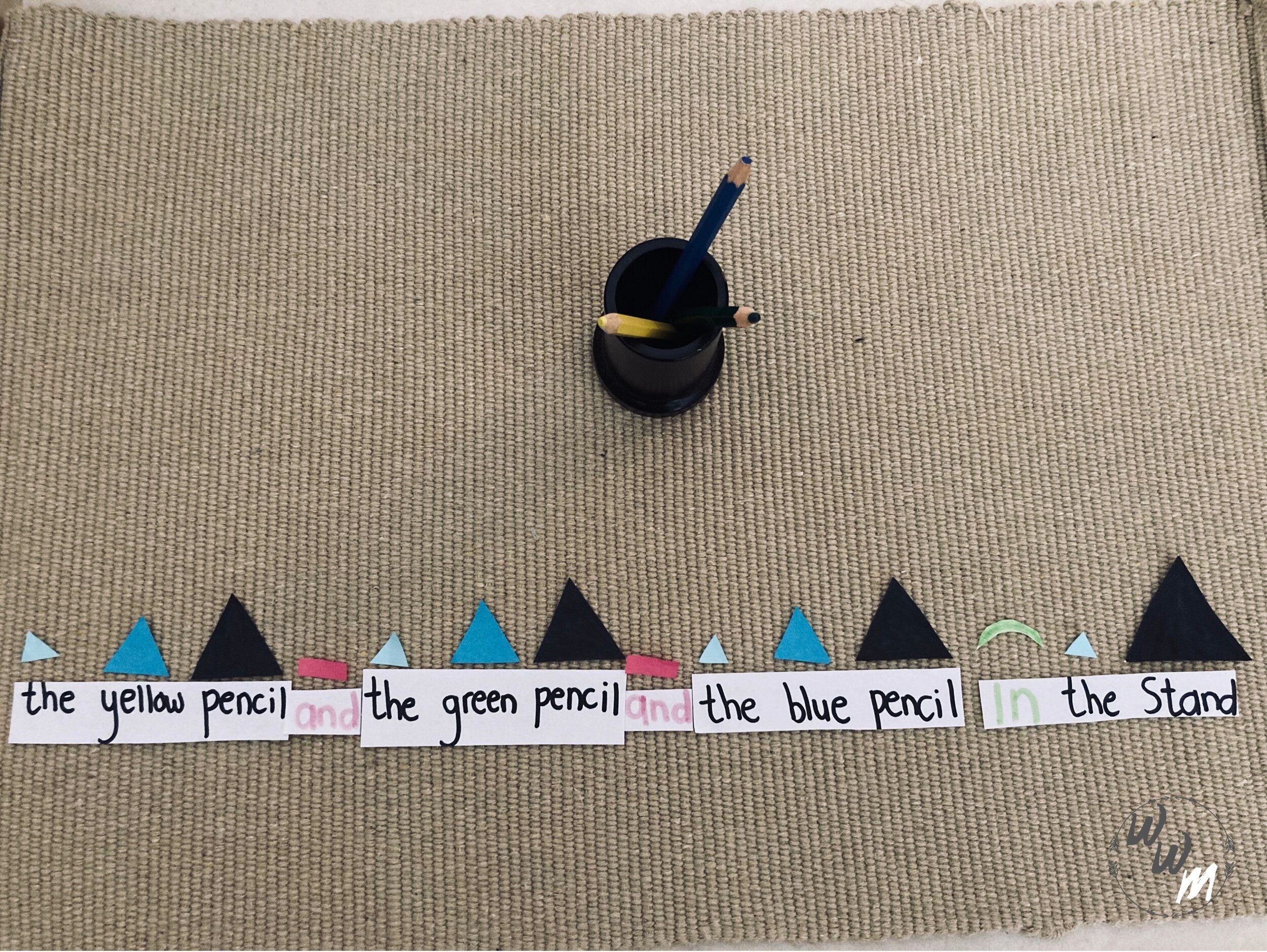Grammar in Montessori
Maria Montessori’s aim was to make the child fully aware of language and help him have a better understanding of the role of language. In Montessori, we use symbols where each one represents a part of speech. We teach the child the history of grammar and the changes over time, in order for the child to fully grasp the concept of grammar in a Montessori classroom, and for the child to experience grammar as a rich part of our heritage.
Maria Montessori represented matter by a black pyramid (noun), she illustrated the vitality of a verb as a red circle, comparing it to the vitality and energy of the sun. Pyramids go back many many years, they are stationary and incapable of moving. We, therefore, use the black pyramid to represent the noun, which is also solid and it is a naming word.
Maria Montessori expressed the red ball into the red symbol for verbs. The verb stimulates the objects, just like the sun stimulates all living things.
The various grammar activities in Montessori are listed below:
Noun game (group presentation one - oral noun game)
This activity is done in groups to introduce the children to nouns through oral activity. This exercise increases the children’s vocabulary, as well as is a great introduction to grammar.
Noun game (group presentation two)
The second presentation of the noun game is a fantastic way to broadens the children’s knowledge and learn the functions of the nouns. In this activity, the children are encouraged to read out a noun card, and then go and fetch the object that is named on the card.
Introduction to the noun symbol (group presentation)
The directress introduces the noun symbol to a group of children, which is a black triangle. In this activity, she explains why we use a triangle to represent the noun, and why it is black. She involves the children as much as possible, by asking them to fetch a noun in the classroom.
The article game
In this Montessori language activity, the directress introduces articles to the child. Through this activity, the child is able to completely grasp the concept of an article and the meaning of what it is and what it represents.
Adjective game (oral group presentation one)
In this activity, the directress introduces adjectives to a group of children by means of describing certain objects for them to fetch in the classroom. This exercise increases the child’s vocabulary, as well as teaches them the functions of adjectives.
Adjective game (presentation two: group adjective card game)
This Montessori language activity broadens the child’s knowledge as the directress uses cards to introduce the child to phonetic adjectives. This is a fantastic exercise that increases the child’s vocabulary.
The Logical Adjective game (group presentation)
In this activity, the directress uses the noun and adjective cards, as well as their respective symbols. The directress teaches the child how to match the corresponding noun and adjective cards.
The Detective Adjective game (individual presentation)
This activity is a little tricky for the child, as he will be working through 63 different triangles to find the exact one that the directress is asking for. Through this activity, the child notices the investigative power of ruling out various objects in a group until the correct one is found.
Verb game (group one presentation)
Children are introduced to verbs in this activity. The directress gives each child a card with a phonetic verb printed on it. The child is then encouraged to act out the verb, and the other children must guess what verb he is acting out. All children generally love this activity.
Introduction to the adverb (group presentation)
The directress writes down a verb in red koki on a piece of paper and lets the child act out the verb like before. She then writes down an adverb in an orange marker on another piece of paper and places it to the right of the verb. The child is asked to act out the modified version of the verb. This is a wonderful way for children to fully understand adverbs.
The Logical Adverb game (group/individual presentation)
In this activity, the directress broadens the child’s knowledge as she shows him the function of the adverb. This exercise reinforces the grammar symbols as the directress uses the verb and adverb symbols, as well as increases the child’s vocabulary.
The Conjunction game (individual presentation)
Through this Montessori language activity, the child learns the function of the conjunction ‘and’. This exercise makes it so much easier for the child to understand why we use the word ‘and’, as well as the importance of it.
The Preposition game (individual presentation)
The directress teaches the child the function of prepositions in this Montessori language activity. She does this by writing down on a piece of paper where exactly she wants certain objects to be placed in or on.
Singular and plural box (individual presentation)
In this activity, the directress teaches the child the difference between singular and plural words through the use of cards and many various objects.
Phonetic animal farm (individual presentation)
The directress introduces a model of a farm containing phonetic farm animals, as well as various cards for the noun, adjective, verb, article. The child is encouraged to build sentences with the various parts of speech cards.






